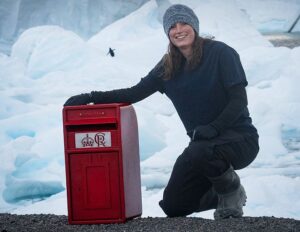A silent killer forms below sea ice and freezes anything it touches during the Arctic and Antarctic winter. It is not an animal. Rather, it is one of nature’s weirdest quirks. The brine icicle, or brinicle, was first discovered in the 1960s. It remained relatively unknown until BBC’s Frozen Planet captured footage in 2011.
It is a slow-growing, hollow stalactite of ice that forms on the bottom of sea ice in winter and descends to the ocean floor. As sea ice begins to develop, salt is expelled from the ice, causing it to leak into the surrounding water. The expulsion of salt makes the ice porous in texture.
The resulting brine is highly saline and much colder than ordinary sea water, which freezes at around -2˚C. As it begins to descend into the depths, a sheath of sea water forms around it in an icicle-like shape. The water in the icicle itself does not freeze, as its density has increased and its freezing temperature has lowered because of the high salinity.

Diving among the brinicles. Photo: Andrew Thurber
It takes the icicle roughly up to 12 hours to grow and reach the ocean floor. Some scientists have even witnessed a faster descent of five to six hours. Witnesses have described the incredible spectacle in very unusual but accurate ways. Andrew Thurber, a researcher at Oregon State University, refers to them as “upside-down cacti”. The journal of the American Chemical Society describes its formation as a hydrothermal vent in reverse. In other words, instead of carrying hot water, it channels supercooled water.

Brinicle forming from the sea ice. Photo: BBC
If it touches the ocean floor, all hell breaks loose
The size of the brinicle depends on the water’s depth, the extent of the sea ice, and the temperature of the water. Sometimes, when the water is too deep, it does not manage to touch the seafloor. Currents can also interfere and cause the icicle to break off.
If it forms fully, all hell breaks loose when it touches the seafloor. It creates a fast-moving channel of ice (see video below) that instantly freezes the creepy crawlies, tiny starfish, and sea urchins which are too slow and unable to escape the icicle’s icy web.
As it freezes, the floor becomes a graveyard littered with the skeletons of marine life. Furthermore, the icy stream travels downward and accumulates in what is sometimes called the “black pool of death”. These pools are deadly to other animals but are not known to harm humans. It is advised that you don’t go look for these brinicles to test that theory for yourself.
As we continue to explore the polar oceans, scientists are gathering more information on these brinicles. Predictably, astrobiologists have connected these specific conditions to those on moons such as Ganymede and Callisto in their quest to find life in harsh environments. Brine that collects on the ocean floor is said to play a part in the ocean’s circulation.





